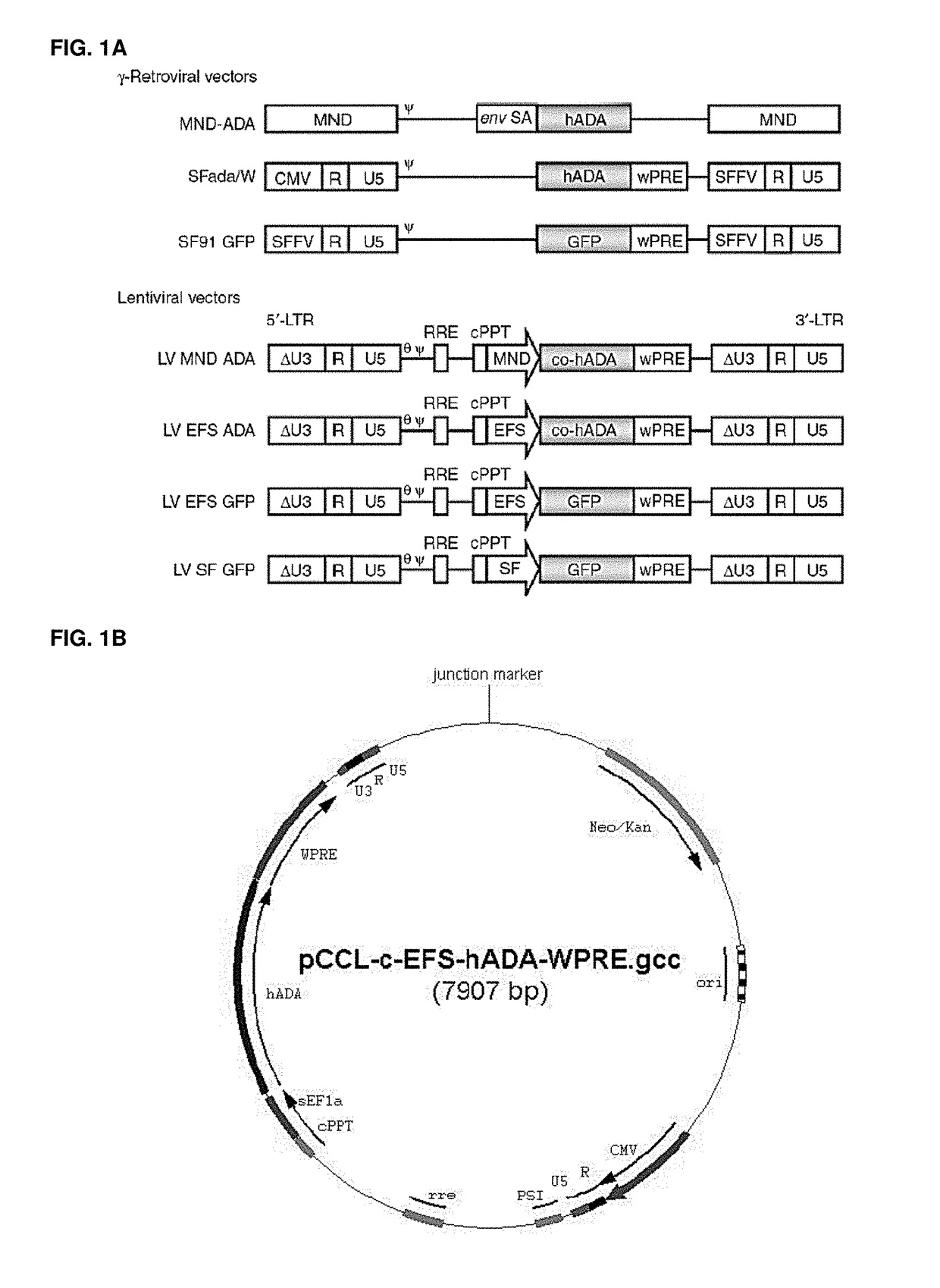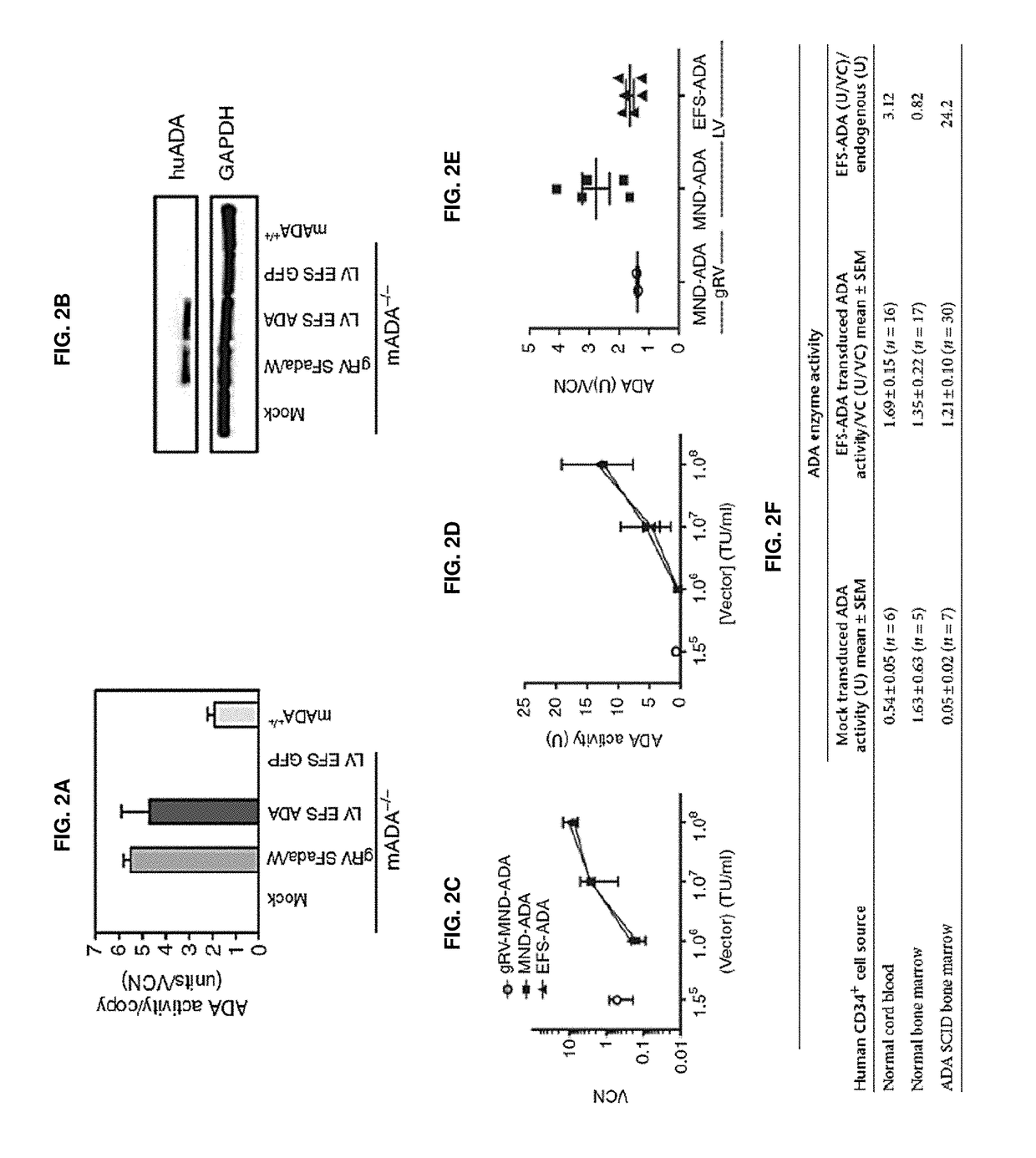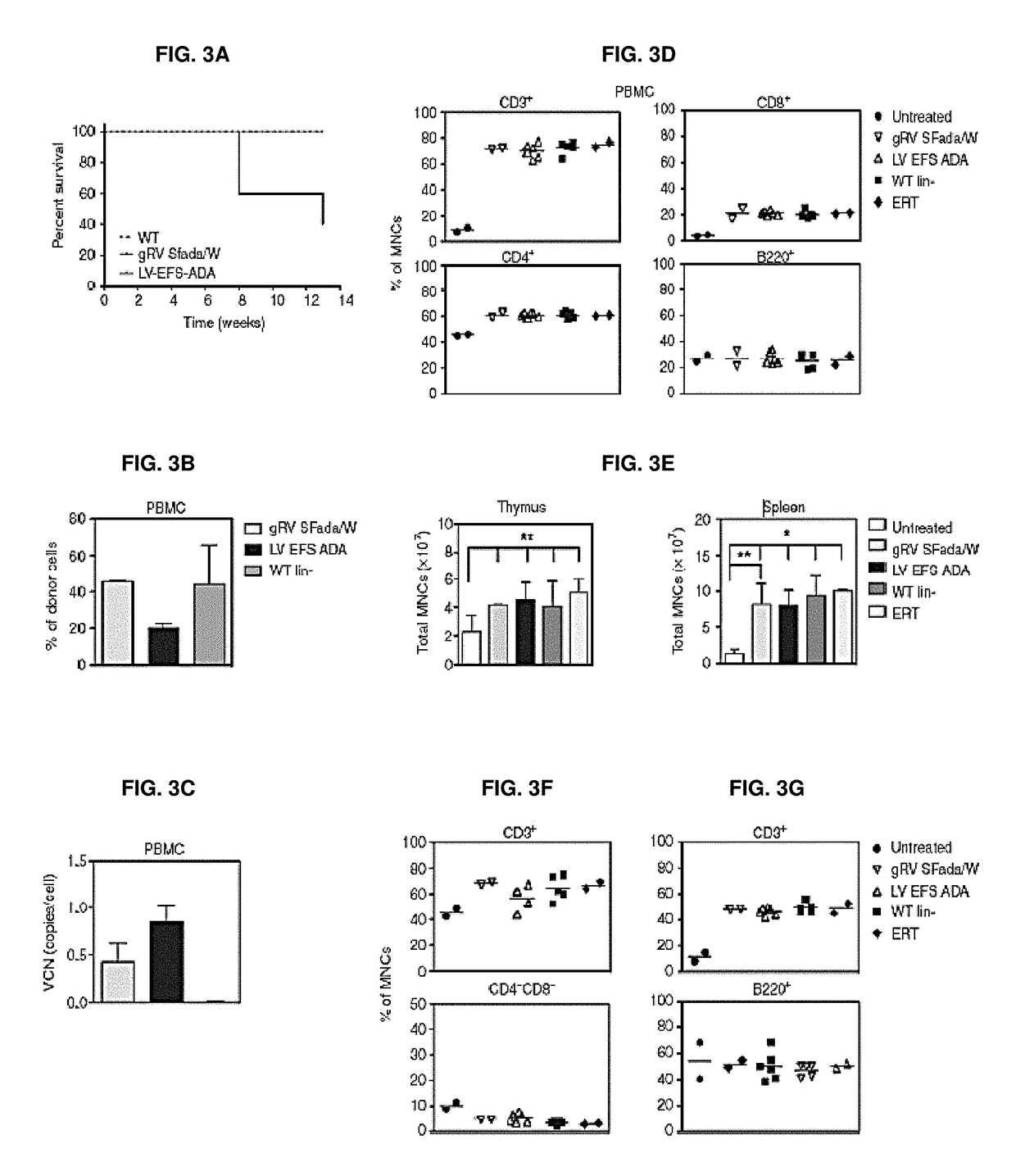Treatment
a gene therapy and treatment technology, applied in the field of gene therapy, can solve the problems of poor long-term immune recovery, poor survival after hsct from matched unrelated donors, mismatched unrelated donors, or parental donors, etc., to improve the ability of lv, improve immune recovery, and reduce the potential for insertional mutagenesis
- Summary
- Abstract
- Description
- Claims
- Application Information
AI Technical Summary
Benefits of technology
Problems solved by technology
Method used
Image
Examples
example 1
n of Previously Used gRV Vectors with the Novel LV Vector
[0316]Vectors used are shown in FIGS. 1A and 1B. First, it was shown that LV ADA can efficiently transduce murine and human HSCs. Lineage depleted bone marrow cells (Lin−) isolated from ADA− / − mice (ADA− / − HSC) were isolated and transduced with viral vectors at a multiplicity of infection (MOI) of 20 under optimized protocols. Normalized enzymatic activity (ADA activity / vector copy) showed that LV EFS ADA had similar efficacy of transgene expression in murine ADA− / − HSCs compared with gRVSFada / W (FIG. 2A). Similar levels of ADA protein expression were detected in ADA− / − HSC by western blot analysis (FIG. 2B) and demonstrated that LV EFS ADA mediates efficient transduction and transgene expression in ADA− / − HSCs. LV EFS ADA was also compared to another gRV used previously in a clinical trial, gRV MND-ADA and an LV in which the MND LTR U3 enhancer / promoter controls ADA expression (LV MND ADA). Human cord blood CD34+ cells (CB HS...
example 2
ransduction of Normal and ADA-Deficient Human Cord Blood and Bone Marrow CD34+ Cells Analysed In Vitro and Vivo
[0319]To further evaluate LV EFS ADA and to gain insight into the effects of IL-3 on LV transduction of human HSC, we compared transduction and long-term engraftment of the CB CD34+ cells, with and without IL-3 included in the prestimulation and transduction media. CB HSC (n=2) were thawed, plated (500,000 cell / ml), and prestimulated for 20 hours in medium containing human stem cell factor, human FLT3-L and human TPO (S / F / T), with or without IL-3 (20 ng / ml). The prestimulated cells were transduced with LV EFS ADA (3.0×107 TU / ml) or mock transduced. To test the effects of IL-3 exposure on the engraftment of more primitive stem / progenitor cells, LV EFS ADA-transduced or mock-transduced CD34+ cells were xenotransplanted into Nod / SCID / γ C (NSG) primary and secondary mouse recipients. The VCN measured after 14-day short-term culture was two-fold higher with IL-3 (2.5±0.8) compar...
example 3
re-Clinical Data Including Expression of ADA from the EFS-ADA LV Construct
[0322]In initial experiments, we compared the ability of the EFS-ADA lentiviral vector to express ADA in comparison to the current clinical grade γ-retroviral vector (Sfada / W). Following transduction of 3 different cell lines, ADA expression following transduction of cells with the EFS-ADA lentiviral vector (normalised for vector copy number) was either equivalent to or superior than the expression seen in cells transduced with the Sfada / W vector. This included an EBV transformed LCL from a patient with ADA deficiency (FIGS. 8A and 8B). Total ADA activity is shown in FIG. 8A and activity normalised for vector copy number is shown in FIG. 8B.
[0323]In further studies compared the EFS-ADA lentiviral vector with a similar lentiviral vector in which the ADA gene was transcribed by an internal PGK promoter. A number of different cell lines were transduced including ADA-ve LCLs, primary T cells from a normal individu...
PUM
| Property | Measurement | Unit |
|---|---|---|
| Fraction | aaaaa | aaaaa |
| Time | aaaaa | aaaaa |
| Time | aaaaa | aaaaa |
Abstract
Description
Claims
Application Information
 Login to View More
Login to View More - R&D
- Intellectual Property
- Life Sciences
- Materials
- Tech Scout
- Unparalleled Data Quality
- Higher Quality Content
- 60% Fewer Hallucinations
Browse by: Latest US Patents, China's latest patents, Technical Efficacy Thesaurus, Application Domain, Technology Topic, Popular Technical Reports.
© 2025 PatSnap. All rights reserved.Legal|Privacy policy|Modern Slavery Act Transparency Statement|Sitemap|About US| Contact US: help@patsnap.com



